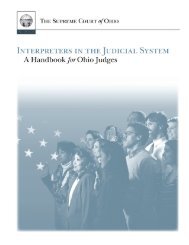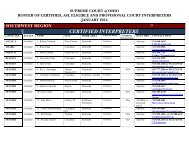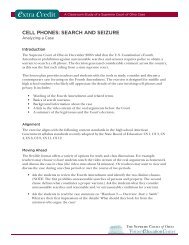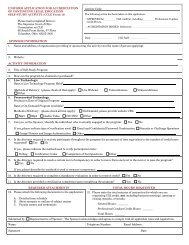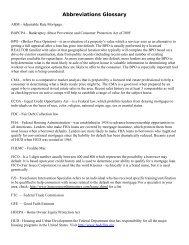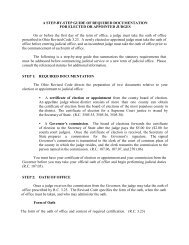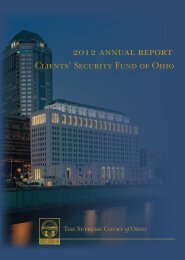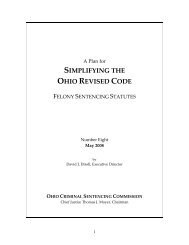Planning for Parenting Time: Ohio's Guide for Parents Living Apart
Planning for Parenting Time: Ohio's Guide for Parents Living Apart
Planning for Parenting Time: Ohio's Guide for Parents Living Apart
You also want an ePaper? Increase the reach of your titles
YUMPU automatically turns print PDFs into web optimized ePapers that Google loves.
Child Development and Suggested <strong>Parenting</strong> Schedules<br />
Schedules 12 and 13<br />
include overnights.<br />
Schedules 12 and 13 are <strong>for</strong><br />
parents who:<br />
• Have cared <strong>for</strong> the child<br />
nearly equally, or<br />
• Both know how to care<br />
<strong>for</strong> the child overnight,<br />
or<br />
• Live close enough to<br />
each other that the child<br />
will not have long car<br />
trips between the homes,<br />
or<br />
• Can communicate and<br />
cooperate with each<br />
other about the child’s<br />
care and well-being, or<br />
• Have successfully<br />
followed Schedule 11 <strong>for</strong><br />
a while.<br />
12<br />
13<br />
Schedule 12: Split each week and weekend. (See a<br />
sample schedule on page 20.)<br />
Comment: This schedule provides a consistent<br />
routine and accommodates a young child’s ability to<br />
be apart from either parent <strong>for</strong> three to four days. It<br />
also allows the child to have a “stay-home” day<br />
(Saturday or Sunday) with each parent each week,<br />
which is helpful to many young children. If parents<br />
dislike not having full-weekend parenting time, the<br />
schedule may be modified to allow full weekends<br />
during the summer or on holidays. If desired, parents<br />
may alternate exchanges so one week one parent has<br />
three overnights and the other has four overnights and<br />
the next week the number of overnights is reversed.<br />
Schedule 13: Each parent has the same two<br />
consecutive weekday overnights each week and<br />
alternates the weekends. (See a sample schedule on<br />
page 21.)<br />
Comment: This schedule provides each parent with<br />
alternating full weekends with and without the<br />
children. The children are away from each parent<br />
during alternate weeks <strong>for</strong> five days, which may be<br />
difficult <strong>for</strong> some children this age. This is commonly<br />
referred to as a 5-2-2-5 schedule. This schedule is<br />
ideal when older siblings would benefit from this<br />
schedule. This schedule is helpful when the parents’<br />
level of conflict makes exchanges difficult, because<br />
all exchanges can take place at day care.<br />
Vacation: Each parent may have up to 10 days in<br />
town or out of town each year or two one-week<br />
periods separated by at least three weeks. At least 30<br />
days be<strong>for</strong>e the planned vacation, each parent must<br />
give the other parent written notice of the travel<br />
dates. At least 3 days be<strong>for</strong>e travel, each parent must<br />
give detailed in<strong>for</strong>mation to the other parent,<br />
including the places they will be going and how to<br />
reach the child or the parent during the vacation.<br />
35




